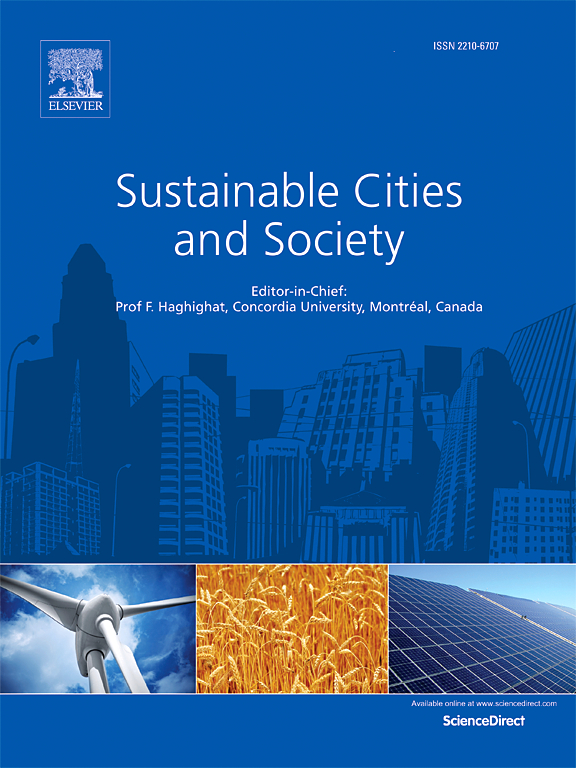Thermal exposure across age groups: Social, spatial, and temporal inequalities in Nanjing, China
IF 10.5
1区 工程技术
Q1 CONSTRUCTION & BUILDING TECHNOLOGY
引用次数: 0
Abstract
As climate change and urban expansion intensify, unequal thermal exposure among different age groups has emerged as a significant health concern. Existing studies on age groups' thermal exposures have notable gaps: (1) the lack of comparison between summer and winter seasons; and (2) insufficient understanding of how metropolitan location (e.g., inner-city, suburban) and built environment characteristics (e.g., land cover, morphology) influence thermal exposure. To bridge these gaps, this study analyzes Land Surface Temperature (LST) exposure of children (0–14 years), adults (15–59 years), and senior citizens (60+ years) across Nanjing's neighborhoods during the summer and winter of 2020. The study shows that variations in metropolitan locations correspond to demographic differences and built environment characteristics such as impervious surfaces, vegetation, and building heights, leading to social, spatial and temporal LST inequalities among age groups. For instance, inner-city areas exhibited higher thermal exposure risk in both summer and winter, particularly affecting senior citizens. In contrast, adults experienced relatively moderate LST exposure, likely due to their suburban residence. Random forest model results indicate that built environment characteristics significantly and seasonally influence LST. In summer, higher proportions of impervious surfaces and lower levels of vegetation contribute to elevated LST in inner-city areas. Conversely, in winter, greater impervious surface areas, taller buildings, and greater distance from industrial zones correlate with lower temperatures in these regions. This study ultimately highlights the need for policy interventions to mitigate thermal exposure inequities among different age groups.
求助全文
约1分钟内获得全文
求助全文
来源期刊

Sustainable Cities and Society
Social Sciences-Geography, Planning and Development
CiteScore
22.00
自引率
13.70%
发文量
810
审稿时长
27 days
期刊介绍:
Sustainable Cities and Society (SCS) is an international journal that focuses on fundamental and applied research to promote environmentally sustainable and socially resilient cities. The journal welcomes cross-cutting, multi-disciplinary research in various areas, including:
1. Smart cities and resilient environments;
2. Alternative/clean energy sources, energy distribution, distributed energy generation, and energy demand reduction/management;
3. Monitoring and improving air quality in built environment and cities (e.g., healthy built environment and air quality management);
4. Energy efficient, low/zero carbon, and green buildings/communities;
5. Climate change mitigation and adaptation in urban environments;
6. Green infrastructure and BMPs;
7. Environmental Footprint accounting and management;
8. Urban agriculture and forestry;
9. ICT, smart grid and intelligent infrastructure;
10. Urban design/planning, regulations, legislation, certification, economics, and policy;
11. Social aspects, impacts and resiliency of cities;
12. Behavior monitoring, analysis and change within urban communities;
13. Health monitoring and improvement;
14. Nexus issues related to sustainable cities and societies;
15. Smart city governance;
16. Decision Support Systems for trade-off and uncertainty analysis for improved management of cities and society;
17. Big data, machine learning, and artificial intelligence applications and case studies;
18. Critical infrastructure protection, including security, privacy, forensics, and reliability issues of cyber-physical systems.
19. Water footprint reduction and urban water distribution, harvesting, treatment, reuse and management;
20. Waste reduction and recycling;
21. Wastewater collection, treatment and recycling;
22. Smart, clean and healthy transportation systems and infrastructure;
 求助内容:
求助内容: 应助结果提醒方式:
应助结果提醒方式:


